Blood Secrets: Chronicles of a Crime Scene Reconstructionist Read online
Page 15
I’ve investigated quite a number of cases that hinged on DNA technology. But the one that made the most powerful impression on me is the murder of Helena Greenwood.
Case Study: Better Late than Never
Helena Greenwood, a British scientist-turned-marketer for a California biotech firm on the cutting edge of DNA diagnostics, was at home in her cottage in Atherton, a suburb of San Francisco, on the night of April 7, 1984. She spent the evening catching up on work, then went to bed early since her husband, Roger, was away on business. She wasn’t worried about staying alone. Atherton was wealthy and sedate, and crime was virtually nonexistent.
So it was with great horror and shock that she woke up in the darkness to see a tall, athletically built stranger with a gun coming toward her bed through the darkened room. Keeping his hood pulled tight around his face so that all Greenwood could see were his eyes, the stranger ordered her to take off her clothes, then marched her through the house to her purse. After finding little money in it, he forced her back to her bedroom and demanded she perform fellatio on him. Terrified, she complied. A short time later, he pushed her away and fled. Shaking and fighting tears, Greenwood ran to the neighbors’ house and asked them to call the police.
Detectives combed the cottage and retrieved a semen-stained pillowcase, several hairs, and a white teapot that had somehow ended up on the deck when the stranger slipped in through the kitchen window. A forensics lab discovered a stranger’s fingerprint on it, but it didn’t match any in the FBI’s criminal database. That gave detectives little to go on, and the case stagnated until women in an apartment complex in the nearby community of Belmont started reporting similar assaults.
By the time a thirteen-year-old girl in the French Village apartments called police in February 1985 to report a man masturbating outside her window, Helena Greenwood had been offered a job with the biotech firm Gen-Probe in San Diego and had gratefully moved south with Roger after assuring the prosecutor that she would return to testify. Police hurried to French Village and apprehended someone named David Paul Frediani on the grounds. Frediani claimed he was in the market for a new apartment and had been looking for the manager of the complex when he was suddenly seized with an urgent need to urinate. Without a bathroom close by, he relieved himself in the bushes and the girl caught sight of him.
Unconvinced, the authorities charged Frediani with indecent exposure and began exploring whether he might have been behind the other Belmont assaults. When an inter-station intelligence report about Frediani crossed the desk of Atherton Police Department Sergeant Steve Chaput, who was overseeing the still open Greenwood assault, he connected the two. He ran a check on Frediani’s fingerprints and found that they matched the mystery prints on the Greenwoods’ teapot. Chaput approached DA Martin Murray and got an arrest warrant for Frediani for attempted burglary and forced oral copulation in the Helena Greenwood attack.
At the police station, Chaput’s suspect vehemently denied any involvement until he heard about the fingerprint match. Then his demeanor changed entirely. According to the officers interrogating him, he started breathing hard, fidgeting compulsively, and claiming to have been so drunk that he didn’t know what he was doing when “those things” happened.
Greenwood testified at a preliminary hearing about the assault and the general appearance of her assailant, though she said she couldn’t be sure it was the man at the defense table. Bail was set at $25,000, and Paul Frediani’s trial was scheduled for September 16.
Then the unthinkable happened.
When Helena Greenwood, the consummate professional who pulled long hours and seldom missed a day of work, failed to turn up for a conference at the office, her colleagues got worried. They phoned Roger, who raced home but couldn’t open the gate leading to their rental home near the beach. He peered over the top to find out what was blocking it and saw his wife’s blood-covered body slumped on the other side.
Helena Greenwood had been strangled to death and her head smashed against the gate’s metal latch, creating a wide laceration in her scalp. Though she hadn’t been raped, her skirt had been pulled up over her hips and her legs propped open. Scratches, scrapes, and cuts covered her arms, legs, and face—unmistakable evidence of a violent struggle. Papers she had intended to take to work with her drifted through the yard, caught in the afternoon breeze.
Roger called the police, who carefully bagged and tagged all the evidence at the scene and during the autopsy. But there was too little blood and skin under Greenwood’s fingernails to hope to identify her killer. The prime suspect? Frediani, naturally. He was out on bail, and police records revealed that he had gotten into a traffic accident 130 miles from the crime scene a week before it happened. When asked what he was doing so far south of San Francisco, he claimed he had decided on the spur of the moment to get out of town.
Though it certainly wasn’t definitive proof of his guilt, Paul Frediani had the size and strength to strangle someone to death, which is harder physically than most people realize. What’s more, he had the motive. Eliminating the only witness would have considerably upped his chance of beating the burglary-assault rap. It’s worth noting that death by strangulation rarely happens among strangers. More often than not, the assailant knows his victim and channels tremendous rage against him or her into the attack.
Still, it wasn’t enough to charge Frediani with the murder.
Come September, the assault case went on as planned minus its star witness. No one was allowed to tell the jurors that Helena Green-wood had been murdered for fear of prejudicing them against Frediani. They weren’t even allowed to refer to her in the past tense. No one explained why she wasn’t there to give her own testimony. When Frediani took the stand, he explained his fingerprint on the teapot by stating that he had been house hunting (the Greenwoods’ cottage was for sale at the time of the assault) and claiming his statements at the police station referred to other drunken acts—not sexual assaults. Nonetheless, the jury found him guilty and he was sentenced to nine years in prison. He won an appeal and was retried and found guilty by a second jury in 1987.
Years passed. Paul Frediani had served out his sentence and been released from prison by the time San Diego detective Laura Heilig was poring over a ream of cold case documents in 1998 and pulled out the file on Helena Greenwood. Practical applications for DNA technology had progressed at lightning speed since the 1980s—when Greenwood herself had been perched on the cutting edge of the field—and Heilig was in luck with this case since the evidence hadn’t been tossed out. She sent the fingernail clippings and scrapings to a DNA lab along with samples of Greenwood’s hair to make sure any DNA they found wasn’t the victim’s. Just as Heilig hoped, technicians located foreign DNA in the evidence. Next Heilig obtained a sample of Paul Frediani’s DNA from the state Department of Justice lab to test for a match.
Bingo.
It looked as though Laura Heilig had identified Helena Green-wood’s killer at last. She met with Deputy DA Valerie Summers and got an arrest warrant for Paul Frediani for the murder of Helena Greenwood.
Frediani insisted he was innocent. He claimed the police, who had ample access to his DNA samples on file with the Department of Justice, had planted them in the Greenwood evidence to close a case that had long rankled them.
Before the trial, Summers sought my help in interpreting the blood evidence that remained from the Greenwood murder. I went down to San Diego and examined more than two hundred photographs of the crime scene as well as the autopsy, then went to see the spot where the murder occurred. I do that whenever it’s possible, even if every trace of evidence has long since vanished, because it gives me a more thorough, accurate understanding of the crime and puts it in a solid physical context. Angles, perspective, and minute details you can miss easily even if you’re studying hundreds of photos suddenly become apparent when you stand in the spot where someone died.
From what I saw in the photographs, the blood Helena Greenwood lost testified to th
e tremendous struggle that preceded her death. This woman had obviously fought like hell to stay alive. The multiple cuts and bruises and the low- and medium-velocity spatter told me that she was still fighting hard when her attacker finally forced her to her knees and bashed her head into the latch on the gate to subdue her. Her head wound had been deep enough to bleed freely. It had created a pool on the ground with blood-into-blood patterning and satellite drops in the dirt and on her clothes. The abrasions on her neck, the petechial hemorrhages in her eyes, and the fact that she had bitten the inside of her own mouth were consistent with strangulation.
Greenwood had clearly been posed in that awkward splay-legged position after she died or when she was too weak to resist. The most interesting point about this was the bloody hand transfer pattern on her torn nylons—the handprints of her killer as he gripped her ankles and propped her legs open in his last degrading gesture. We had a lab run tests on the transfer pattern, and Frediani’s DNA turned up on the bloody panty hose.
Based on the DNA evidence—primarily from the fingernails, but also from the panty hose—a jury found Paul Frediani guilty of murder in the first degree. In March 2001, he was sentenced to life in prison without the possibility of parole. Helena Greenwood’s husband, Roger, had succumbed to cancer by the time the jury returned a verdict. Her mother, too, died of the disease a few weeks before her daughter’s death. Greenwood’s father, her last close surviving relative, was suffering from cancer throughout the trial. He died sixteen hours after learning the verdict in his daughter’s murder.
Brainteasers in Blood
Even those of us who devote our lives to studying blood patterns and manage to stockpile a fair amount of knowledge about them run into crime scenes that leave us scratching our heads. It’s inevitable in this line of work. In the years since the unforgettable Vomit Case—when I mistook regurgitation from bleeding ulcers for an ax murderer’s handiwork and blithely announced it over the police radio—I’ve encountered plenty of mystery patterns that left me scratching my head. To save myself chagrin, I keep my theories quiet until I’m sure about what caused them. But I’ve seen more than one experienced detective identify blood that squirted out of ruptured varicose veins as an arterial spurt from a homicide. It’s easy to do. When someone is walking as a leg vein bursts, the pattern mimics an arterial spurt almost perfectly.
I’ve also seen instances when everyone on the scene missed the obvious, myself included. Case in point: In Santa Monica, California, in the 1970s, police got a call from a distraught woman claiming she had found her boyfriend dead on the bathroom floor. Detectives hurried to the scene and found the body of a man clad only in his underwear, covered in dried blood smears and shattered glass from a broken shower door. (Needless to say, this was before safety glass became a standard feature in bathroom fixtures.)
They photographed every inch of the crime scene and took copious notes. But it wasn’t until weeks later that the technician developing the images posed an interesting question: “There’s blood all over the room. How come there isn’t a drop of it on the victim’s briefs?” Blood covered his legs, his arms, and his torso. One bloody hand even rested on the pristine white underwear. Why didn’t any of it transfer to the fabric?
The answer? The blood was already dry by the time someone carefully slipped undergarments onto the dead man. The coroner concluded that the victim had died of exsanguination. In simple terms, he bled to death. From that, detectives deduced that he fell through his shower door, severed a major artery, and rolled around in his own watery blood as he struggled unsuccessfully to get up, spreading the blood and sustaining additional cuts and gashes.
When the police reinterviewed the victim’s girlfriend and confronted her with the facts, she admitted that she had gone to her boyfriend’s house, let herself in, and found him dead in his bathroom. Not wanting him to suffer the final indignity of having police swarm in and see him naked, she put underwear on him before calling the police department. Because the blood was already dry, her hands and feet left no evidence of her actions.
The death was ruled accidental.
I often use the case as a teaching tool in my seminars. I show the photograph and invite attendees to examine it during breaks to see whether they can pinpoint what’s out of place in the scene.
Here’s a second strange blood pattern from an actual case that took place in the mid-1980s: A young couple in Orange County, California, came home from dinner and were accosted by a pair of armed men at their front door. The men shoved them inside, slammed the door behind them, and marched the couple to the second floor of their home. They led the woman into one room and the man into another. One intruder used surgical tubing and handcuffs to tie the man’s hands behind his back and forced him to the floor, where he held him at gunpoint. Meanwhile, his accomplice raped the woman in the next room. Then they switched places. After they finished, they shot the man three times in the head execution style and left him lying face-down on the carpet. The woman survived to call the police but could tell them little about what happened during her husband’s murder.
The question officers from the Buena Park Police Department hired me to answer was this: How did a figure eight composed of hundreds of individual blood droplets end up on the carpet next to the deceased’s head?
The lab people and the detectives each had a different theory. One camp surmised that he had been picked up and carried to that spot in the room. Another thought the blood had leaked from his mouth and nose. We solved the mystery only through extensive role-playing and reconstruction in a motel room that we rented expressly for the purpose. I worked with the local criminalist, trying scenario after scenario, ruling out various theories. At last we discovered that the truth lay hidden in the dead man’s jacket. When you looked at it closely in the photos, you could see that it was all bunched up at the shoulders. That told us one of the killers grabbed the victim’s jacket after shooting him and rolled him over onto his shoulder so that his head was off the floor long enough for it to leak blood from the three bullet holes—most likely while he searched the jacket for money. Before they left, they rolled the victim back to his original position facing downward, which created the second loop of the figure eight.
There’s a frequently cited Sherlock Holmes quote in which the fictional detective instructs his friend Watson, “Once you eliminate the impossible, Whatever remains, no matter how improbable, must be the truth.” It’s not quite that simple. There’s always a chance that you’re wrong, that the real explanation lies in some obscure action or unlikely catalyst that has never crossed your mind. Still, the concept of painstakingly ruling out the possibilities one by one is the most valid approach to detective work I know.
6
Celebrity Cases
AS WORD ABOUT MY work in crime scene reconstruction and blood pattern analysis spread through the legal field, I started to get calls from DAs and defense attorneys seeking my opinion on criminal cases involving names I recognized from TV and movies. I had already seen the cutthroat capabilities of lawyers, and I knew that with a celebrity client or victim, the stakes would be exponentially higher—more media, more potential for a lawyer to make or break his reputation. If I agreed to serve as an expert witness in celebrity trials, I would set myself up for the kind of punishment on the stand that only a masochist could enjoy.
I also knew that my interpretation of the blood patterns at a crime scene wouldn’t change, no matter who asked me to analyze them or what they wanted me to find. There are guns for hire out there, but my career is based on my credibility. I go where the evidence takes me. As I tell every client at the outset, “Blood evidence might work in your favor. It might work against you. We won’t know until we examine it.” That’s not the kind of guarantee power players in Hollywood like to hear.
Even when crimes involving the rich and famous turn up intriguing blood evidence and I can shed light on what it means, I can’t guarantee that a judge or jury will listen to me. Real lif
e isn’t neat and simple like the majority of TV crime dramas. You don’t always find out whodunit. You don’t always get the bad guy. And the case doesn’t always hinge on blood evidence. Sometimes my findings play a pivotal role. Sometimes they play only a minor part in unlocking the mysteries of a murder.
No matter what, my procedure remains the same: I examine the evidence methodically, conduct experiments when they are needed, report my findings, testify about them if I’m asked to, and then leave. I never stick around the courtroom to hear the verdict read out. That would show an undue interest in the outcome of the case, and my job is to be impartial. I have to focus on the evidence, not the characters, even when the rest of the country is obsessed with them.
Case Study: Bob Crane and the Mystery Marks
One of the early celebrity cases I consulted on was the murder of former Hogan’s Heroes star Bob Crane. In the summer of 1978, Crane was in Scottsdale, Arizona, starring in a play called Beginner’s Luck at the Windmill Dinner Theatre. When he failed to turn up for a publicity event on June 29, his costar Victoria Berry decided to drop by the Winfield Apartments, where Crane had taken up temporary residence, to make sure he was okay. Finding the door unlocked, she walked in and saw her costar lying facedown in bed, clad only in boxer shorts and partially covered by blankets. His head was covered in blood.
Berry called the police, who rushed to the scene and determined that Crane was dead, his skull crushed by two blows from a blunt instrument. The forty-nine-year-old actor had been hit so hard that his bloodied face was almost unrecognizable, and whoever killed him made doubly sure he succeeded by winding an electrical cord tightly around Crane’s neck to strangle him after bludgeoning him.

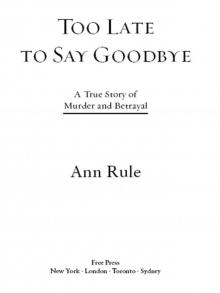 Too Late to Say Goodbye: A True Story of Murder and Betrayal
Too Late to Say Goodbye: A True Story of Murder and Betrayal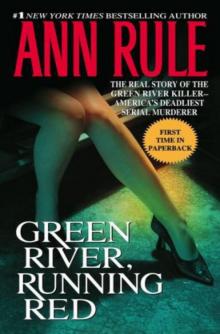 Green River, Running Red
Green River, Running Red Bitter Harvest
Bitter Harvest Dead by Sunset: Perfect Husband, Perfect Killer?
Dead by Sunset: Perfect Husband, Perfect Killer?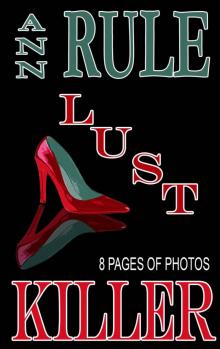 Lust Killer
Lust Killer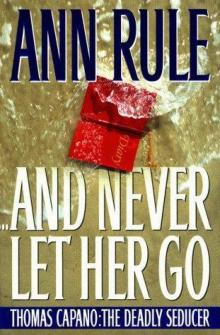 And Never Let Her Go: Thomas Capano: The Deadly Seducer
And Never Let Her Go: Thomas Capano: The Deadly Seducer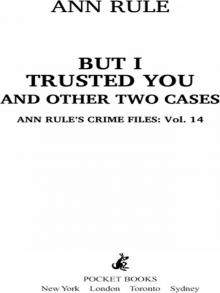 But I Trusted You and Other True Cases
But I Trusted You and Other True Cases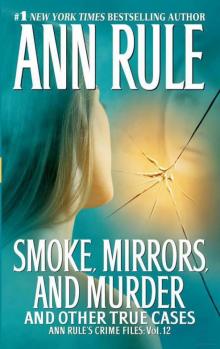 Smoke, Mirrors, and Murder and Other True Cases
Smoke, Mirrors, and Murder and Other True Cases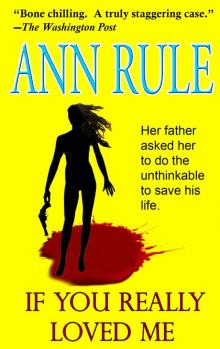 If You Really Loved Me
If You Really Loved Me Kiss Me, Kill Me and Other True Cases
Kiss Me, Kill Me and Other True Cases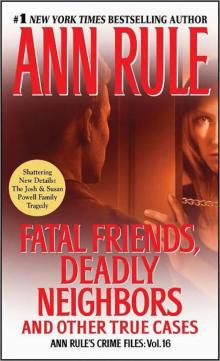 Fatal Friends, Deadly Neighbors and Other True Cases
Fatal Friends, Deadly Neighbors and Other True Cases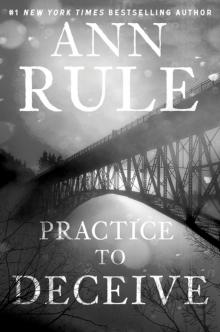 Practice to Deceive
Practice to Deceive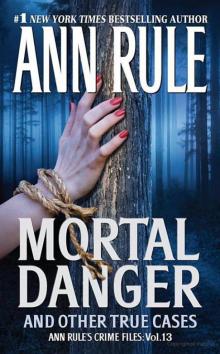 Mortal Danger and Other True Cases
Mortal Danger and Other True Cases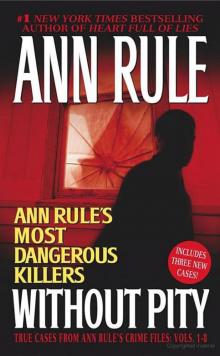 Without Pity: Ann Rule's Most Dangerous Killers
Without Pity: Ann Rule's Most Dangerous Killers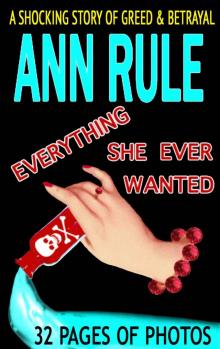 Everything She Ever Wanted
Everything She Ever Wanted A Fever in the Heart and Other True Cases
A Fever in the Heart and Other True Cases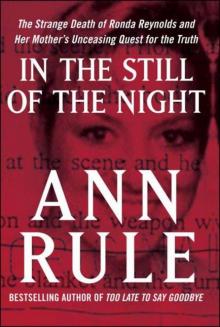 In the Still of the Night
In the Still of the Night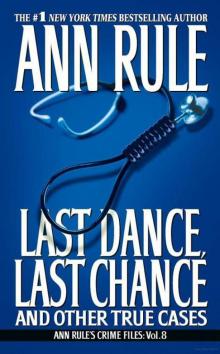 LAST DANCE, LAST CHANCE - and Other True Cases
LAST DANCE, LAST CHANCE - and Other True Cases A Rage to Kill
A Rage to Kill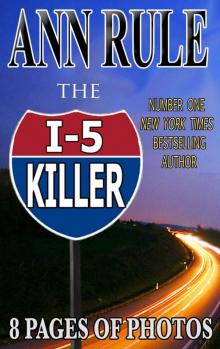 The I-5 Killer
The I-5 Killer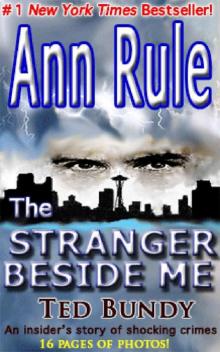 The Stranger Beside Me
The Stranger Beside Me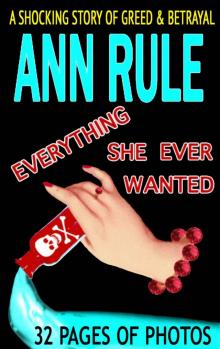 Everything She Ever Wanted: A True Story of Obsessive Love, Murder, and Betrayal
Everything She Ever Wanted: A True Story of Obsessive Love, Murder, and Betrayal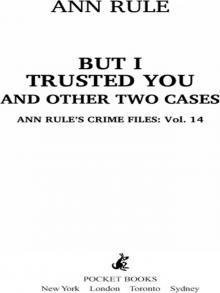 But I Trusted You
But I Trusted You Without Pity
Without Pity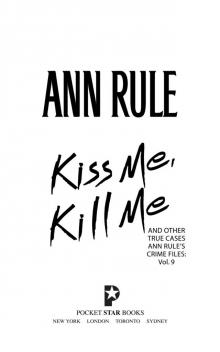 Kiss Me, Kill Me
Kiss Me, Kill Me Too Late to Say Goodbye
Too Late to Say Goodbye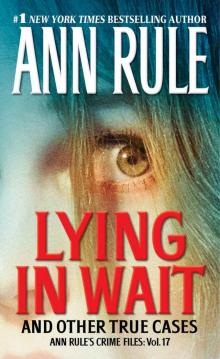 Lying in Wait
Lying in Wait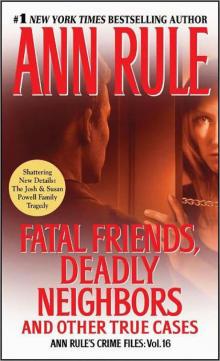 Fatal Friends, Deadly Neighbors
Fatal Friends, Deadly Neighbors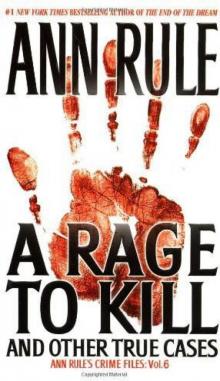 A Rage to Kill: And Other True Cases
A Rage to Kill: And Other True Cases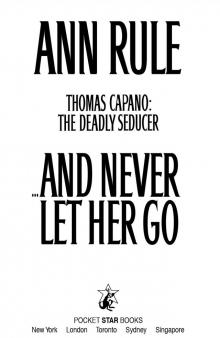 And Never Let Her Go
And Never Let Her Go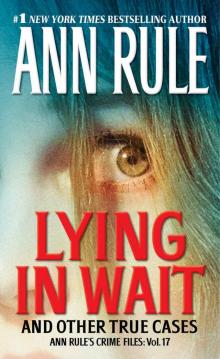 Lying in Wait Ann Rule's Crime Files Vol.17
Lying in Wait Ann Rule's Crime Files Vol.17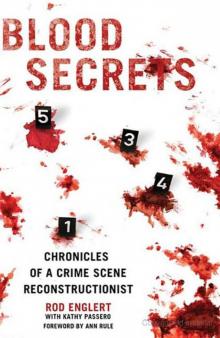 Blood Secrets: Chronicles of a Crime Scene Reconstructionist
Blood Secrets: Chronicles of a Crime Scene Reconstructionist No Regrets
No Regrets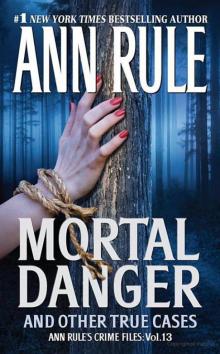 Mortal Danger
Mortal Danger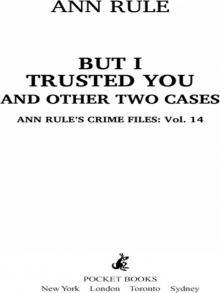 But I Trusted You: Ann Rule's Crime Files #14
But I Trusted You: Ann Rule's Crime Files #14 Empty Promises
Empty Promises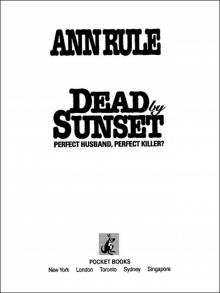 Dead by Sunset
Dead by Sunset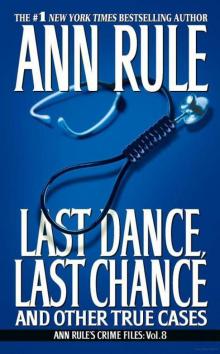 Last Dance, Last Chance
Last Dance, Last Chance Don't Look Behind You
Don't Look Behind You